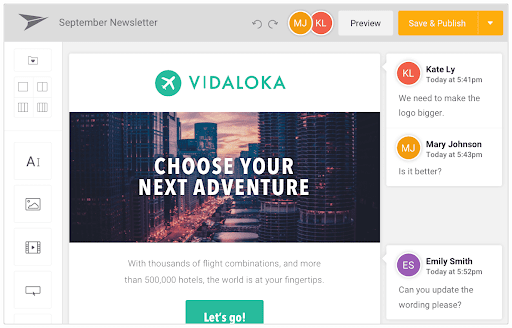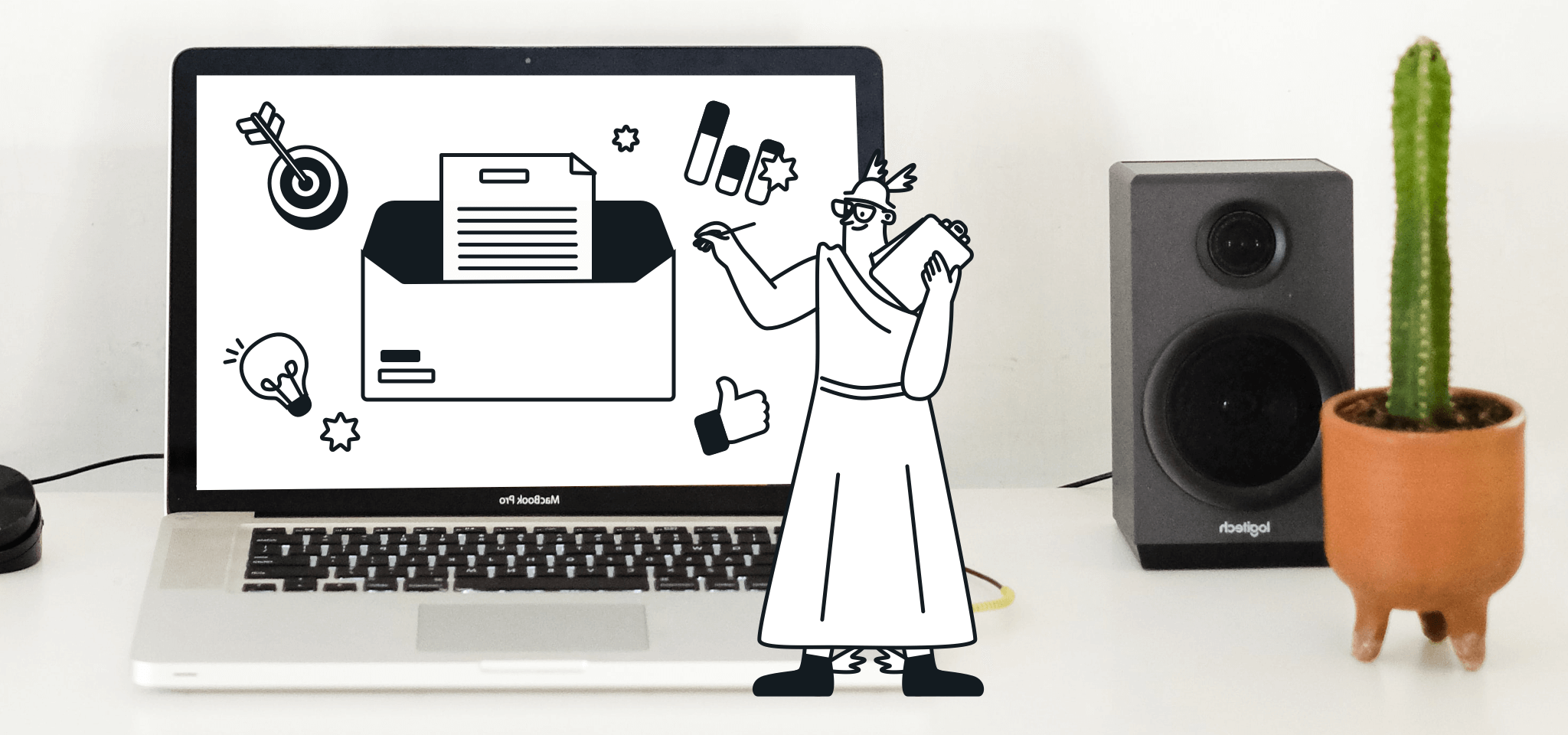Marketing
Understanding inbound marketing
Inbound marketing can help you attract users when they are most likely to convert. Learn what it is and how to create a solid inbound marketing strategy.

PUBLISHED ON
Imagine that you’re trying to pick a movie to watch. You look up “best fantasy films” online and see a movie about a “chamber of secrets” listed on a blog—intriguing. You decide to give it a watch.
Without even realizing it, you’ve demonstrated the power of inbound marketing. As the spread of technology continues to grow, companies are finding more and more ways to market their products and services—often through inbound marketing. Shifting to a new way of marketing may seem difficult, but it’s quite easy once you know the basics. We’ll give you the rundown on inbound marketing and how to use it effectively as a winning tool...without messing with any cursed diaries.
Table of contents
Outbound marketing
Inbound marketing
Steps in your inbound marketing strategy
Key channels in your inbound marketing strategy
What is inbound marketing?
A lot of advertising and marketing strategy comes from the concept of presenting a concept or service to a target audience in an attention-getting way—for example, a commercial that plays during popular television shows. However, audiences can become uncomfortable or unresponsive when faced with continuous, “hard sell” strategies. This is where inbound marketing comes in. Instead of focusing on pushing a product in front of a consumer, inbound marketing focuses on drawing in the consumer organically and inspiring them to find out more about the product. In the digital age, this often takes the form of interactive social media posts, call-to-action emails, newsletters and blogs, and more.
Inbound marketing versus outbound marketing
Inbound marketing and outbound marketing may sound similar, but they have a variety of differences between them. So, what makes in different from out?
Outbound marketing
Here, you’re sending out a message—via, for example, television commercial, billboard, or magazine ad–and hoping for a response from whoever in your audience may be in need of what you’re advertising.
Outbound marketing has its place, but attempting to base your entire marketing strategy around it ignores the more organic ways inbound marketing can pull in new customers and build relationships with older ones.
Inbound marketing
Inbound marketing is based around the concept of drawing customers in. As mentioned before, this involves creating helpful, high-quality content for consumers. If they’re searching online for a product or service you provide, how will you ensure that they reach your page instead of another’s? If they want a quick video, social media post, or usage guide that provides more information, will they find yours first?
Inbound marketing is all about creating successful content that answers questions and provides information. By giving consumers what they want and need, you can pull them into your sphere of influence and help them choose your solution.
Benefits of inbound marketing
Inbound marketing has many benefits that will help strengthen your overall marketing strategy. Some of these include:
Higher quality leads -- when you simply put your advertisements and calls-to-action in front of a large audience, it’s hard to gauge how many people will respond, and how interested those people will be. With inbound marketing, you encourage people to research your organization and find out more for themselves. Those who have this interest will be more likely to have a serious interest in your products and services, and more likely to do business with you.
Deeper, more credible consumer relationships -- if you just send out a few impersonal, non-specific messages to your audience, they won’t really know who you are, what you do, or why they should trust you. Using blogs, videos, and other strategies to answer questions and offer encouragement will impress your audience and let them know that you are credible, knowledgeable, and genuinely invested in them.
More opportunities to find what marketing works for you -- if you are only invested in outbound marketing, you’re not really exploring the full potential of how you can connect to your audience. With inbound marketing, you may discover that you have more success with email, social, or other inbound strategies than you do with traditional outbound marketing.
How to build an inbound marketing strategy
No matter what form it takes, inbound marketing strategy has four desired steps:

Steps in your inbound marketing strategy
Attract
By creating quality content that is optimized for your audience, you can attract potential new customers. This is done by answering their questions, providing information about your products and services, and appearing approachable, not insistent. Focus on quality content creation, search engine optimization, and experimenting with a wide variety of social platforms.
Convert
Convert attracted visitors to leads by obtaining their contact information. Content is key here as well—create welcoming, interesting, and informative landing pages and sign-up calls to action to ensure that customers want to keep in contact with you. Focus on carefully calibrated landing pages and persuasive calls to action.
Close
Ensure your leads become new business by following lead best practices and targeted sales tactics to close deals and satisfy searching consumers. Focus on informative, gentle follow-up communication and active lead nurturing.
Delight
Once you’ve closed your deals, don’t leave your clients hanging! Continue to give them content that helps them better utilize your products and services and feel pleased with the attention and care they’ve received. Focus on maintaining communication, answering questions, building brand loyalty, and optimizing your products and services according to feedback.
Key channels in your inbound marketing strategy
A lot of inbound marketing, because of its purpose, is focused on the first two steps: attracting and converting. But which channels can you use to do this effectively?
Social media
It’s important to have a clean, focused social media presence for your brand. Impart useful information and initiate quality conversations with potential clients. Form meaningful relationships and understand what a consumer is looking for.
Blog posts
Keep an informative, SEO-optimized blog and other online resources so that, when a consumer finds your website, they know exactly what products and services you provide and why they’re beneficial. Define complex topics and explain how you solve problems.
Landing pages
You can attract and convert consumers to your product or service with strong calls-to-action and optimized landing pages. Consumers aren’t going to know how to utilize you if you provide only information with no pathway to moving forward. Make sure your landing pages are persuasive, detailed, and answer the consumer’s questions and address their needs.
Online videos and webinars
Online videos and webinars are a great way to answer questions and show off your products and services in real time. For many consumers, it’s much easier to see someone complete a process with a visual or explain something via a webinar than it is to retain several pages’ worth of information and step-by-step instructions. Adapt to how your consumers want to receive information and guidance.
Email is a great way to nurture your potential leads and keep up with clients you’ve already converted. Use newsletters, special offers, and general check-ins to get a clearer picture of what each lead or client needs, and initiate or strengthen relationships through helpful, consistent communication.
Using these strategies, you’ll be able to use inbound marketing to entice both casual and serious consumers—and convert them to real, lasting business.
Email inbound marketing with Mailjet
Email is one of the most common ways to utilize inbound marketing. You can communicate with interested consumers in a variety of ways, and use the convenience of email to guide them to your social media profiles, landing pages, and other areas of interest.

Mailjet’s collaborative Passport tool helps you and your team build inbound marketing emails quickly and easily, using the elements you want. Include a strong call to action, a funny video, links to essays, and more. Passport lets you design, edit, schedule, and automatically send your emails all in one place. Turn a new marketing campaign idea into a reality and create fantastic messages that will look great on any device and inbox.
Want to learn more about Passport? Check out Mailjet’s Passport demo to see how you can create great inbound marketing emails that stand out in the crowd.
Key takeaways about inbound marketing
Inbound marketing is an incredibly varied, creative, and easy way to market goods and services to audiences both old and new. It benefits both you and your audience by providing needed information and expanding the avenues for potential relationships, and it allows you to understand which channels you and your customers can best work with.
By utilizing inbound marketing, you’ll be able to refresh your marketing strategy and engage your audience in a meaningful way. And, in our eyes, that’s as heroic as Harry Potter himself.








